

Exfoliating soap bars are skincare products that contain abrasive agents to remove dead skin cells. These agents can be natural, such as oatmeal, coffee grounds, or sugar, or chemical, like alpha hydroxy acids (AHAs) or beta hydroxy acids (BHAs). The purpose of exfoliation is to reveal smoother, brighter skin underneath.
These bars are designed for use in the shower or bath, where warm water and steam help open pores and soften skin, enhancing the effectiveness of the exfoliating agents. Various formulations of exfoliating soap bars cater to different skin types and concerns, including acne-prone, dry, or sensitive skin. Some bars incorporate moisturizing ingredients to hydrate the skin while exfoliating.
Exfoliating soap bars offer a convenient method to include exfoliation in a skincare routine, with usage frequency varying from daily to a few times a week, depending on individual skin needs. These products are favored by those seeking to improve skin texture and appearance, as they provide a gentle yet effective exfoliation method without requiring additional products or tools. Exfoliating soap bars are suitable for various skin types, including oily, dry, or combination skin.
Regular use can help unclog pores, reduce the appearance of blemishes and dark spots, and promote a more even skin tone.
One of the main advantages of using an exfoliating soap bar is that it helps to slough off dead skin cells, which can build up on the surface of the skin and cause it to look dull and lackluster. By removing these dead skin cells, exfoliating soap bars reveal the fresh, new skin underneath, leaving the complexion looking brighter and more radiant.
Regular exfoliation can also help to improve the texture of the skin, making it feel smoother and softer to the touch. In addition to improving the appearance and texture of the skin, exfoliating soap bars can also help to unclog pores and prevent breakouts. When dead skin cells accumulate on the surface of the skin, they can mix with oil and dirt to form clogs in the pores, leading to blackheads, whiteheads, and acne.
By regularly exfoliating with a soap bar that contains exfoliating agents like salicylic acid or charcoal, you can help to keep your pores clear and reduce the likelihood of breakouts. Furthermore, exfoliating soap bars can also help to improve the effectiveness of other skincare products that you use. By removing the layer of dead skin cells that sits on the surface of the skin, exfoliating soap bars allow serums, moisturizers, and other treatments to penetrate more deeply into the skin, making them more effective. This means that you can get more out of your skincare routine by incorporating an exfoliating soap bar into it.

When it comes to choosing an exfoliating soap bar for your skin type, it’s important to consider your specific needs and concerns. If you have oily or acne-prone skin, look for an exfoliating soap bar that contains ingredients like salicylic acid or charcoal, which can help to absorb excess oil and unclog pores. These ingredients are also effective at treating and preventing breakouts, making them a great choice for those with acne-prone skin.
For those with dry or sensitive skin, it’s best to opt for a gentler exfoliating soap bar that contains natural exfoliants like oatmeal or sugar. These ingredients provide gentle exfoliation without causing irritation or dryness, making them suitable for those with sensitive skin. Additionally, look for exfoliating soap bars that contain moisturizing ingredients like shea butter or coconut oil to help hydrate and nourish the skin while exfoliating.
If you have combination skin, you may want to consider using different exfoliating soap bars on different areas of your face. For example, you could use a more intense exfoliating soap bar on your T-zone to target oiliness and congestion, while using a gentler exfoliating soap bar on your cheeks to avoid over-drying or irritating drier areas. It’s also important to consider any specific concerns you may have, such as hyperpigmentation or aging skin, when choosing an exfoliating soap bar.
Look for ingredients like glycolic acid or vitamin C, which can help to brighten and even out the skin tone, as well as promote collagen production for firmer, more youthful-looking skin.
| Tip | Description |
|---|---|
| Choose the right exfoliating soap | Look for soap bars with natural exfoliants like oatmeal or coffee grounds for gentle exfoliation. |
| Use warm water | Wet your skin with warm water before applying the exfoliating soap to open up your pores. |
| Gently massage the soap | Use gentle circular motions to massage the soap onto your skin, focusing on rough areas like elbows and knees. |
| Rinse thoroughly | After exfoliating, rinse off the soap thoroughly with warm water to remove any residue. |
| Moisturize after exfoliating | Apply a moisturizer to your skin after exfoliating to keep it hydrated and smooth. |
To get the most out of your exfoliating soap bar, it’s important to use it correctly. Start by wetting your skin and the soap bar with warm water to soften the bar and create a lather. Gently massage the lather onto your skin using circular motions, focusing on areas that are prone to dryness or congestion.
Be sure to avoid scrubbing too vigorously, as this can cause irritation and damage to the skin. After using an exfoliating soap bar, it’s important to follow up with a moisturizer to replenish any lost hydration and protect the skin’s barrier. This is especially important if you have dry or sensitive skin, as exfoliation can sometimes lead to increased dryness or sensitivity.
Look for a moisturizer that contains ingredients like hyaluronic acid or ceramides to help lock in moisture and soothe the skin. It’s also important to be mindful of how often you use an exfoliating soap bar. While some people may be able to tolerate daily exfoliation, others may find that using an exfoliating soap bar a few times a week is more suitable for their skin type.
Pay attention to how your skin responds to regular exfoliation and adjust your usage accordingly. Lastly, be sure to store your exfoliating soap bar in a cool, dry place between uses to prevent it from becoming soggy or melting away too quickly. This will help prolong the life of your soap bar and ensure that it remains effective for as long as possible.
If you’re interested in creating your own exfoliating soap bars at home, there are plenty of DIY recipes that you can try. One simple recipe involves melting a pre-made glycerin soap base in the microwave or on the stovetop and stirring in ingredients like ground coffee or oatmeal for gentle exfoliation. You can also add essential oils like lavender or tea tree oil for added fragrance and skincare benefits.
Another popular DIY exfoliating soap bar recipe involves using a melt-and-pour soap base along with ingredients like sugar or sea salt for exfoliation. Simply melt the soap base, stir in your chosen exfoliant, pour the mixture into molds, and allow it to cool and harden before using. For those who prefer a more traditional approach to soap making, you can also create exfoliating soap bars from scratch using lye and oils.
This method requires more time and effort, as well as safety precautions when working with lye, but it allows for complete control over the ingredients and formulation of your soap bars. No matter which DIY method you choose, be sure to research proper techniques and safety precautions before attempting to make your own exfoliating soap bars at home. Additionally, consider experimenting with different ingredients and formulations to find a recipe that works best for your specific skincare needs.

Some common natural exfoliants found in these bars include oatmeal, which has soothing properties and gently removes dead skin cells; coffee grounds, which provide physical exfoliation and can help improve circulation; and sugar or salt, which dissolve easily in water and provide gentle yet effective exfoliation.
Chemical exfoliants like alpha hydroxy acids (AHAs) and beta hydroxy acids (BHAs) are also commonly found in exfoliating soap bars. AHAs like glycolic acid and lactic acid work by dissolving the bonds between dead skin cells, allowing them to be easily sloughed off from the surface of the skin. BHAs like salicylic acid are oil-soluble and can penetrate deep into the pores to unclog them and prevent breakouts.
In addition to exfoliating agents, many exfoliating soap bars also contain moisturizing ingredients like shea butter, coconut oil, or glycerin to help hydrate and nourish the skin while exfoliating. These ingredients help to prevent over-drying and keep the skin feeling soft and smooth after exfoliation. Other beneficial ingredients commonly found in exfoliating soap bars include essential oils like tea tree oil or lavender oil, which provide fragrance as well as antibacterial or soothing properties; vitamin C, which helps to brighten and even out the skin tone; and activated charcoal, which helps to absorb excess oil and impurities from the skin.
While exfoliating soap bars can offer many benefits for the skin, it’s important to use them with care and consideration. One potential risk of using exfoliating soap bars is over-exfoliation, which can lead to irritation, redness, dryness, or even damage to the skin’s barrier. To avoid over-exfoliation, start by using an exfoliating soap bar once or twice a week and gradually increase usage if your skin tolerates it well.
It’s also important to be mindful of any existing skin conditions or sensitivities when using an exfoliating soap bar. If you have eczema, rosacea, or other inflammatory skin conditions, it’s best to consult with a dermatologist before incorporating an exfoliating soap bar into your skincare routine. Additionally, if you experience any irritation or discomfort after using an exfoliating soap bar, discontinue use immediately and seek advice from a skincare professional.
When using an exfoliating soap bar on your body, be sure to pay attention to areas that may be more sensitive or prone to irritation, such as the chest or bikini line. Use gentle pressure when massaging the soap onto these areas to avoid causing discomfort or damage to the skin. Lastly, be sure to follow up with sunscreen during the day when using an exfoliating soap bar regularly.
Exfoliation can make the skin more sensitive to UV radiation, so it’s important to protect it with a broad-spectrum sunscreen with SPF 30 or higher. In conclusion, exfoliating soap bars are a versatile skincare product that offers many benefits for the skin. By choosing the right exfoliating soap bar for your specific needs and using it effectively and responsibly, you can enjoy smoother, brighter, and healthier-looking skin.
Whether you prefer a pre-made option or want to try making your own DIY recipe at home, there are plenty of options available for incorporating exfoliating soap bars into your skincare routine. Just be sure to use them with caution and pay attention to how your skin responds in order to achieve optimal results without causing any harm.
If you’re interested in learning more about the benefits of using premium handmade soap, check out this article on 10 reasons why premium handmade soap is the best gift you can give. It discusses the unique qualities of handmade soap and why it makes a great gift for any occasion.
Exfoliating soap bars are cleansing bars that contain exfoliating ingredients, such as natural exfoliants like oatmeal, coffee grounds, or pumice, as well as chemical exfoliants like alpha hydroxy acids (AHAs) or beta hydroxy acids (BHAs). These ingredients help to slough off dead skin cells, leaving the skin smoother and more radiant.
Exfoliating soap bars work by physically or chemically removing dead skin cells from the surface of the skin. The exfoliating ingredients in the soap help to unclog pores, prevent ingrown hairs, and improve the skin’s texture and appearance.
Using exfoliating soap bars can help to improve the skin’s texture, reduce the appearance of blemishes and acne, and promote a more radiant complexion. Regular exfoliation can also help to stimulate cell turnover and promote collagen production, leading to firmer, more youthful-looking skin.
The frequency of exfoliating with soap bars depends on the individual’s skin type and sensitivity. For most people, using an exfoliating soap bar 2-3 times a week is sufficient to maintain smooth, healthy skin. However, those with sensitive skin may need to exfoliate less frequently, while those with oily or acne-prone skin may benefit from more frequent exfoliation.
It’s important to avoid over-exfoliating, as this can lead to irritation, redness, and increased sensitivity. Additionally, those with sensitive skin should choose exfoliating soap bars with gentle, natural exfoliants and avoid harsh chemical exfoliants. It’s also essential to follow up with a moisturizer after exfoliating to keep the skin hydrated and protected.
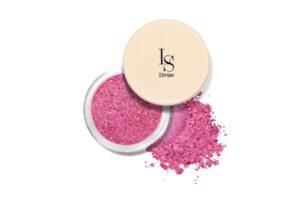
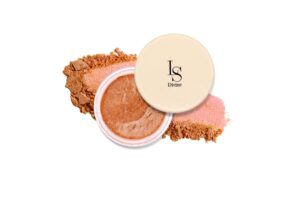
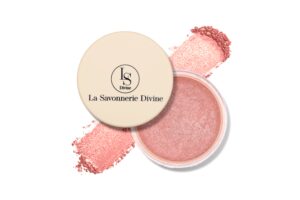

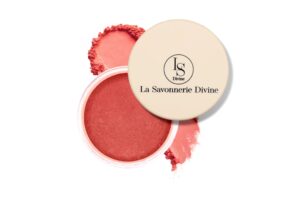
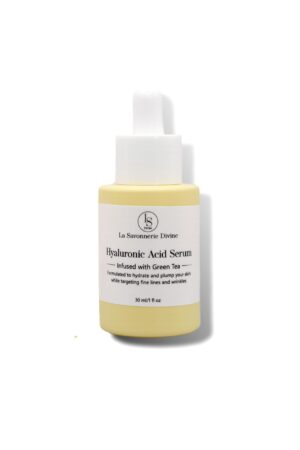
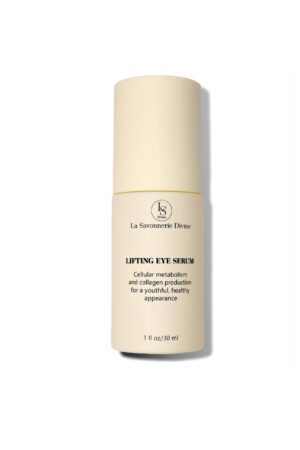
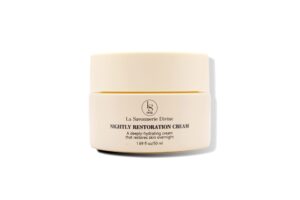
Copyright © 2024 La Savonnerie Divine | Marketing & Design Geek in NY 🗽